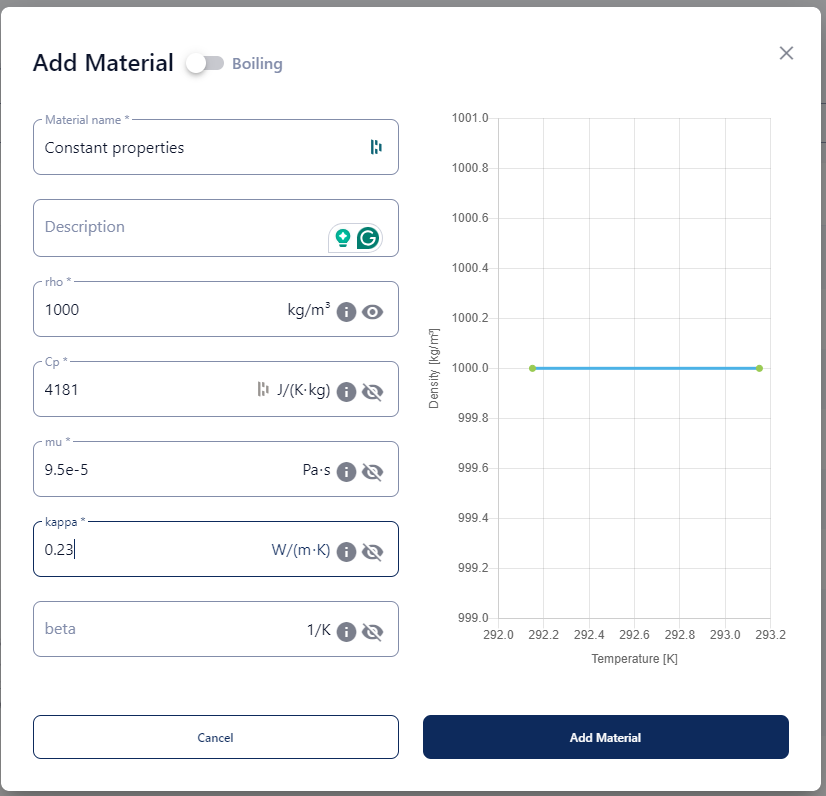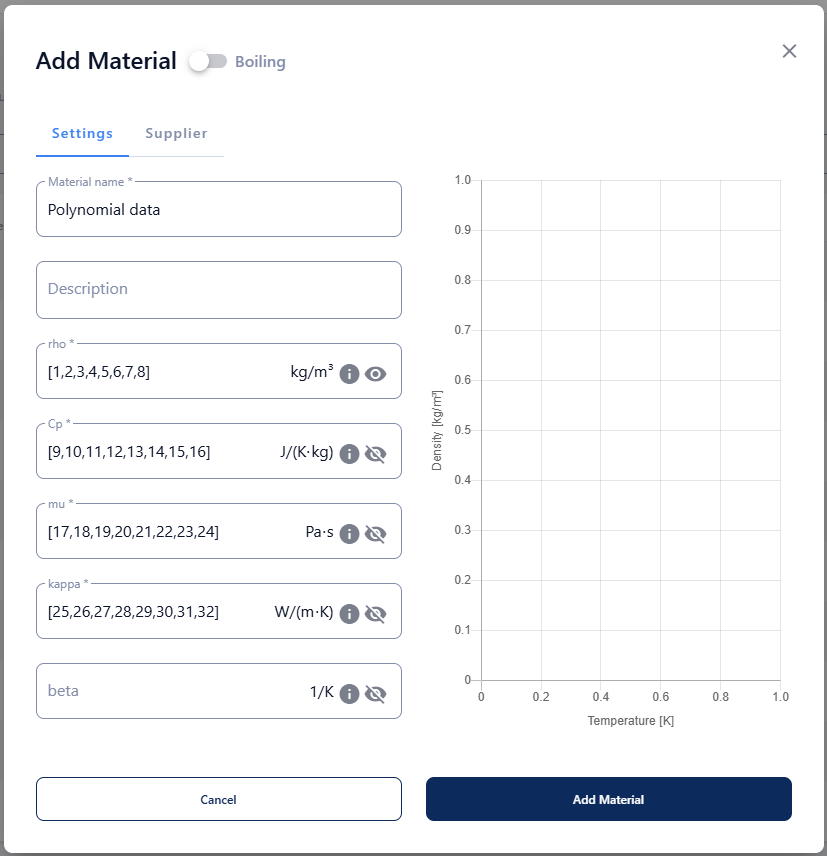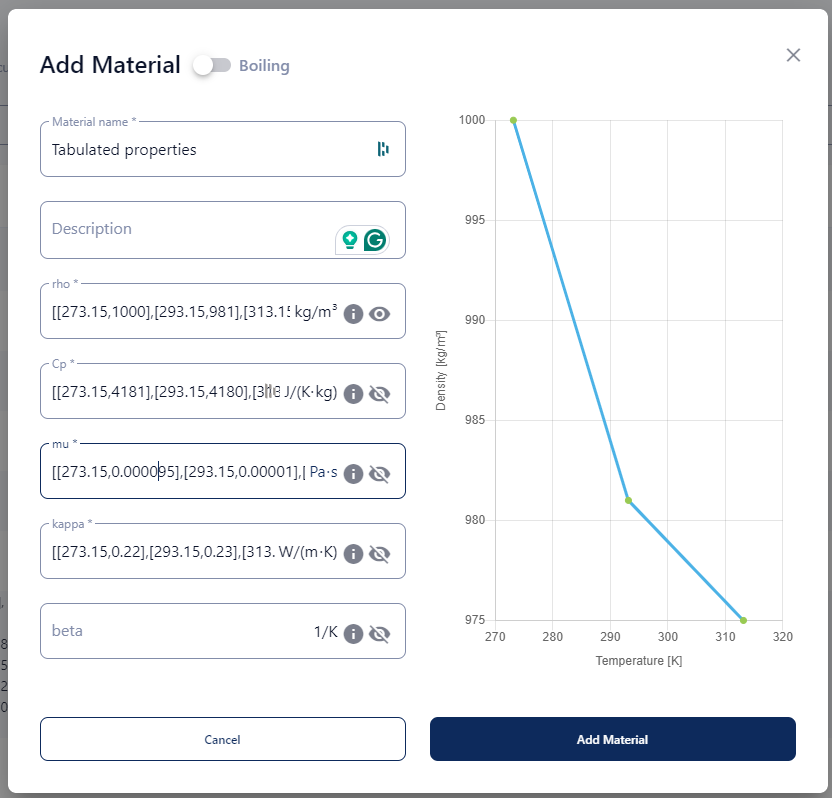How to manage materials
Introduction
Three types of materials are defined: fluid materials, solid materials, and thermal interface materials (TIM). A material can be assigned to a solid region, fluid region, or interface by selecting it from the material list or by defining a new one. The list of materials can be managed through the library page. This page contains a list of predefined materials, but you can define your materials as well. The predefined materials cannot be edited by anyone, your custom materials can.
| Property | Material type | |||
|---|---|---|---|---|
| Name | Unit | Solid | Fluid | TIM |
| Density |
| |||
| Dynamic viscosity |
| |||
| Specific heat capacity |
| |||
| Absorption coefficient |
| |||
| Thermal conductivity |
| |||
| Coefficient of thermal expansion |
| |||
| Thickness |
| |||
| Resistivity |
| |||
| Thermal resistance |
| |||
Solids
Density
- constant value at a reference temperature
- a polynomial function of temperature where a maximum of 8 coefficients can be provided
- table containing temperature and corresponding parameter value of the material at the specified temperature
Specific heat capacity
- constant value at a reference temperature
- a polynomial function of temperature where a maximum of 8 coefficients can be provided
- table containing temperature and corresponding parameter value of the material at the specified temperature
Thermal conductivity
- constant value at a reference temperature
- a polynomial function of temperature where a maximum of 8 coefficients can be provided
- table containing temperature and corresponding parameter value of the material at the specified temperature
Absorption Coefficient
Fluids
Density
- constant value at a reference temperature
- a polynomial function of temperature where a maximum of 8 coefficients can be provided
- table containing temperature and corresponding parameter value of the material at the specified temperature
Dynamic viscosity
- constant value at a reference temperature
- a polynomial function of temperature where a maximum of 8 coefficients can be provided
- table containing temperature and corresponding parameter value of the material at the specified temperature
Specific heat capacity
- constant value at a reference temperature
- a polynomial function of temperature where a maximum of 8 coefficients can be provided
- table containing temperature and corresponding parameter value of the material at the specified temperature
Thermal conductivity
- constant value at a reference temperature
- a polynomial function of temperature where a maximum of 8 coefficients can be provided
- table containing temperature and corresponding parameter value of the material at the specified temperature
Coefficient of thermal expansion
- constant value at a reference temperature
- a polynomial function of temperature where a maximum of 8 coefficients can be provided
- table containing temperature and corresponding parameter value of the material at the specified temperature
Thermal interface materials (TIM)
How to input temperature-dependent material properties?
For fluids, it is possible to enter temperature-dependent values. The following input options are possible:
- A constant value at a reference temperature:
- A polynomial in function of temperature where a maximum of 8 coefficients can be provided:
This array represents the coefficients of a polynomial:
- A table containing the temperature and corresponding parameter value of the material at the specified temperature:

Example of a constant input

Example of a polynomial input for the fluid properties

Example of a tabulated input for the fluid properties
NoteIt is not possible to insert temperature-dependent properties for solids or thermal interfaces, only for fluids.
ImportantWhen creating a fluid, the input for all properties should be identical. This means that either all properties are constant, or tabulated or polynomial, mixing them is not accepted.
Updated about 2 months ago
